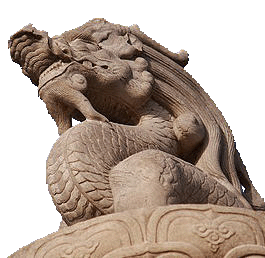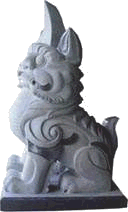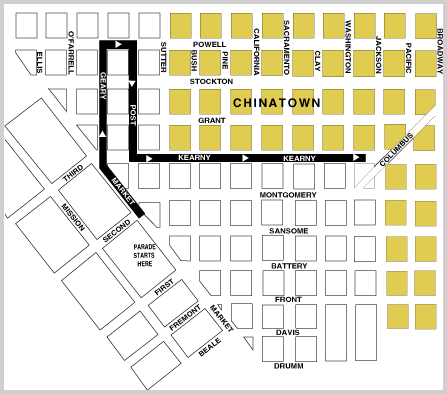Wangtienhou
29 01 2008Admonisher Animal – Wangtienhou (望天吼 pinyin:)
[audio:wang4.mp3,tian1.mp3,hou3.mp3]
In front of the main gate, Tienanmen (天安門 pinyin:), the Gate of Heavenly Peace, of the Imperial palace in Beijin China, there is a tall and ornate pillar, which the Chinese call Huabiao (华表 pinyin:). High above on top of this carved stone column sits a fabulous creature called Wangtienhou (望天吼 pinyin:). It resembles a dragon but is not a dragon, nor is it claimed to be one of the nine descendants of the dragon.
It resembles a dragon but is not a dragon, nor is it claimed to be one of the nine descendants of the dragon.
It is, however, considered sacred and given esteemed reverence. Perched high on a carved column that resembles a totem pole with wings, this creature stands guard and watches every movement of the Emperor. In addition, whenever the Emperor should leave the Imperial palace, he becomes a reminder and an admonished for the Emperor not to indulge in recklessness and become un-cultivated, discarding and neglecting decorum and engage in being a profligate and dissipated, given to debauchery.
Since the Wangtienhou resembles a lion and it stands for all things auspicious, his messages from above, reflect the voice from Heaven. This has been symbolized by the populace in the Lion Dance of the lion climbing up on a tall pole and from the heights, drops from the lion’s mouth, a banner of good wishes and auspicious sayings.
– By William C. Hu and David Lei
Ponddy Reader Lessons:
HSK Level 1: 早上好 – Good Morning
HSK Level 3: 接机 – Picking up someone at the airport
HSK Level 4: 动物园一日游 – A day in the Zoo
[tags]Tienanmen, Huabiao, Wangtienhou, 望天吼, dragon, Lion Dance, mythical creatures, fenshui, lucky charms, travel, beijin, point of interest in beijin, must see in Beijin[/tags]
Comments : 1 Comment » Categories : Mythical Creatures


 During both the Ming (明 pinyin:
During both the Ming (明 pinyin: The beast is usually depicted with his fore feet placed guardedly on eight different precious objects [tag]babao[/tag] (八宝 pinyin:
The beast is usually depicted with his fore feet placed guardedly on eight different precious objects [tag]babao[/tag] (八宝 pinyin: